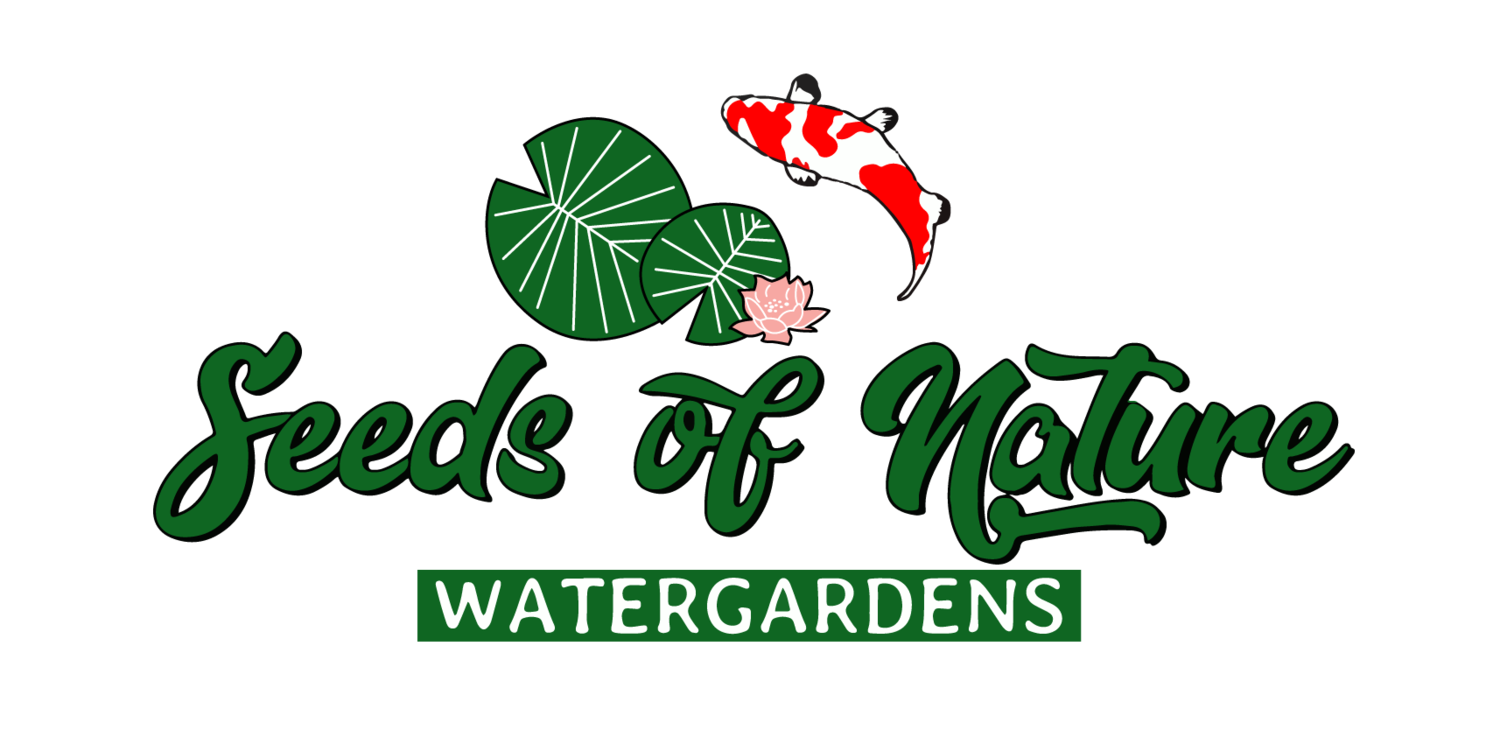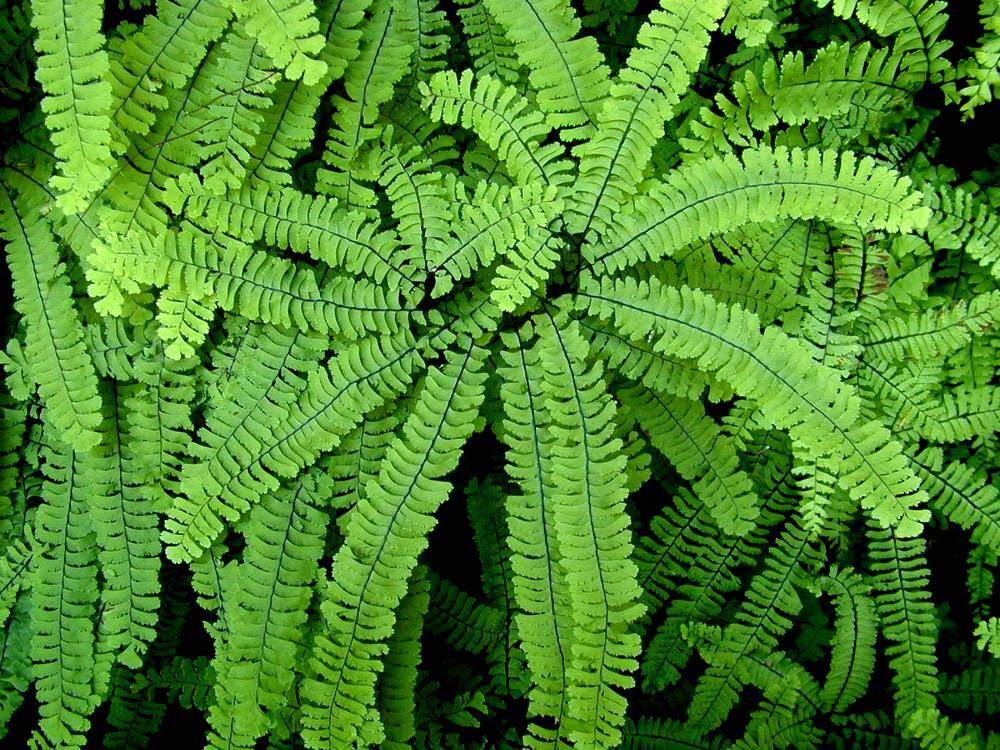As a response to my last article about the top ten native oregon pond plants, I have comprised a list of not so known, and widely popular native, and sometimes endemic plants. I’ve specifically chosen plants that are small to medium sized perennials that will do well in common sized watergardens, ponds, or pondless waterfalls. Just because a cottonwood or ninebark will do well in a gravel pond pocket does not make them well suited for the average watergarden! And while some native annuals will be beautiful; I prefer to plant perennials that will have a dependable impact on the health of your watergarden.
1. Persicaria amphibia (L.), Water Smartweed.
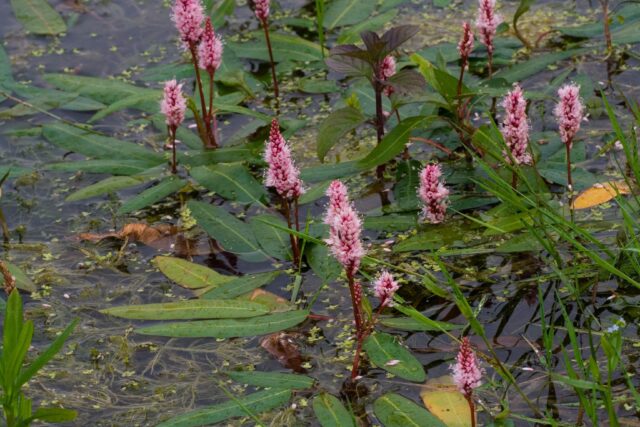
First on the list is the beautiful Persicaria amphibia (L.), Water Smartweed. This fully aquatic or marginal can be found all over the state. Its long slender leaf structure and gorgeous pink blooms gives it an elegant composure to your pond. A rhizomatous perennial herb, this plant can grow fully submerged, or as a marginal, making this a versatile plant to add to streams, wetlands, or directly into the pond.
2. Veronica Americana, American Brooklime or Speedwell
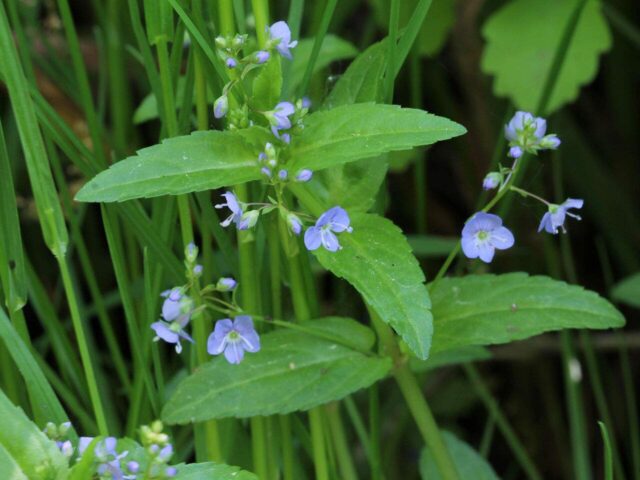
Veronica Americana, American Brooklime or Speedwell, is a widespread oregon native with a similar appearance to mint. Its violet-blue flowers are sure to be an impressive addition to marginal areas such as streams, pond edges, or wetlands. This plant can also be consumed and is said to be similar to watercress.
3. Potamogeton epihydrus, Ribbon Leafed Pondweed
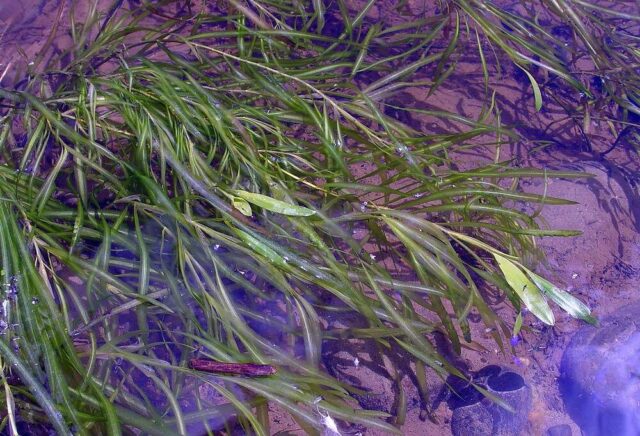
Potamogeton epihydrus, Ribbon Leafed Pondweed, is a PNW native with similar structure to other pondweed species, except its aquatic leaves are slender and ribbon like similar to valisnaria. Its floating leaves are oblique and remeniscent of common pondweeds in the americas. A fantastic dimensional native will give contrast to lillies and provide cover for small fish and frog species.
4. Carex obnupta, Slough Sedge
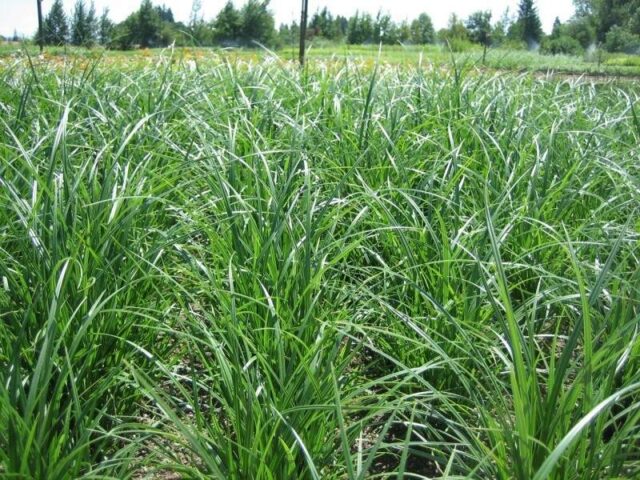
Carex obnupta, Slough Sedge, is a western coast sedge with beautiful copper to reddish brown hues in the base that extend to red dotted leaves. Perfect for edges or wet margins, this rhizomous grass can get quite large, up to 3 feet. Great for hiding rockwork, or creating an intimate border.
5. Carex aquitilius, Water Sedge
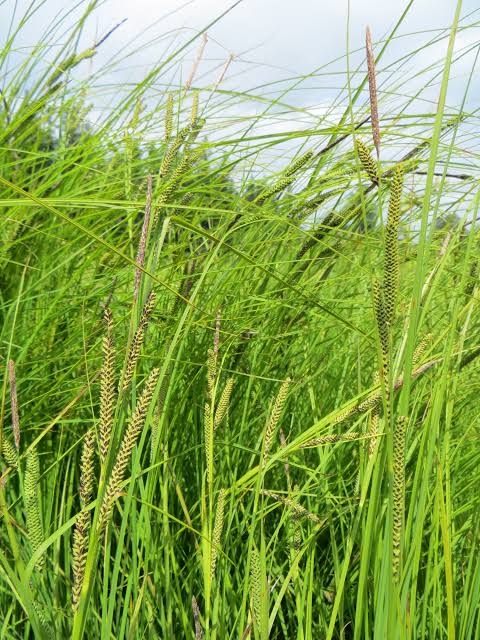
Carex Aquitilius, Water Sedge, is another large west coast sedge with extremely deep rhizomes, and is better suited for gravelly wetlands. I would discourage planting this along the liner edge because sedges can be known to grow through liner from underneath. Sedges are known for being deep feeders and can remediate phosphate overloads.
6. Juncus oxymeris, Pointed Rush
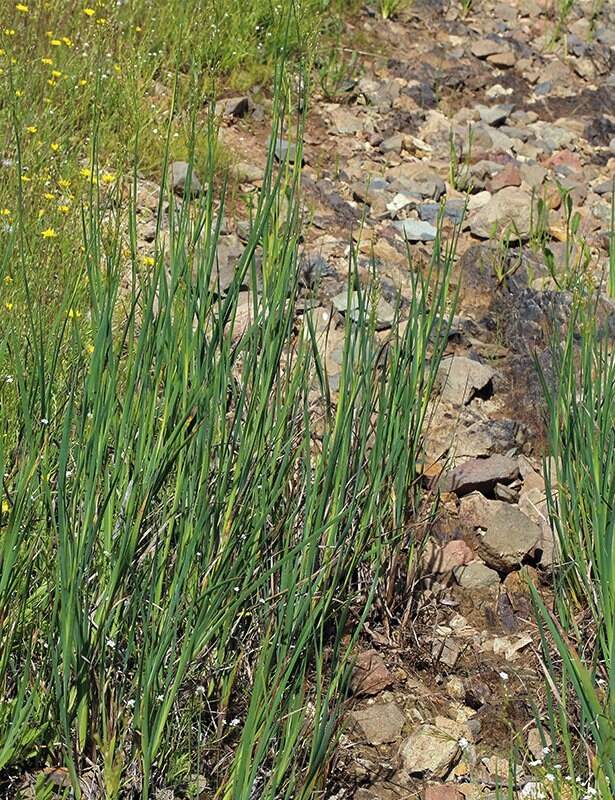
Juncus oxymeris, Pointed Rush, is a blue-green rush that can grow up to 35 inches. A great cylindrical accent and filler to broad leafed plants, this Rush is a great native alternative to nursery options.
7. Scirpus microcarpus, Small-Fruited Bulrush
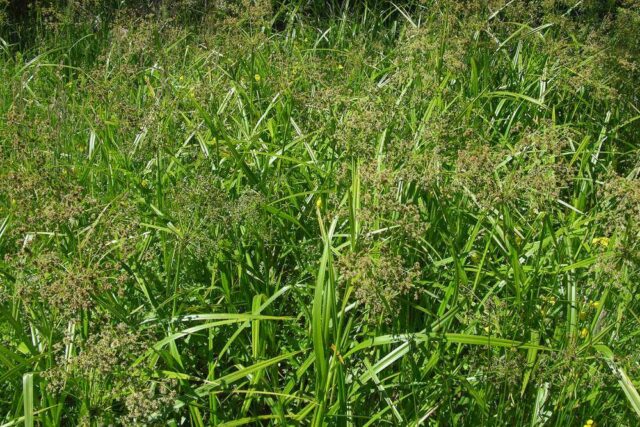
Scirpus microcarpus, Small-Fruited Bulrush, is another great native sedge, with long, spreading rhizomes, and thicker leaves. You’ve likely seen this sedge growing along streams and lakes in Oregon. Again I would shy away from planting along the liner, but keep this plant inside the liner inside gravel pockets.
8. Cardamine penduliflora, Wetlands Bittercress
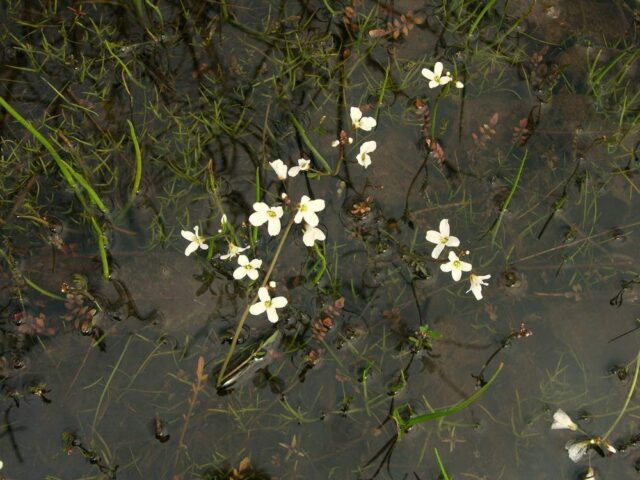
Cardamine penduliflora, Wetlands Bittercress, is a perennial rhizomous flower that is endemic to Oregon. It prefers slow moving marginal areas, and has an extremely delecate stem structure.
9. Downingia elegans, Elegant Downingia
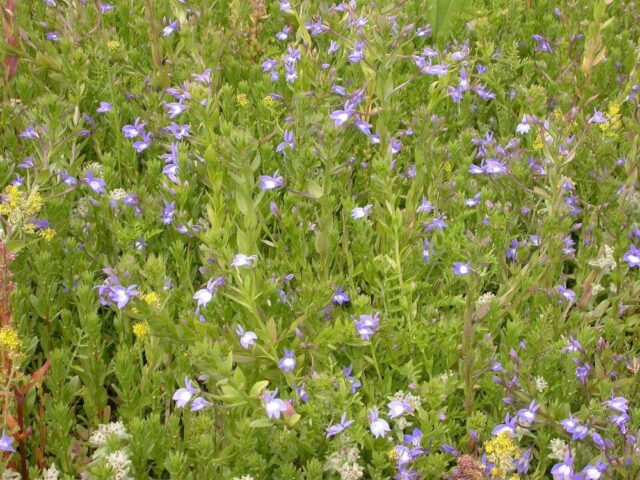
Downingia elegans, Elegant Downingia, is an oregon native, with a variety of color from white to blue to purple. It prefers marginal areas, so I would recommend not covering the crown of the stem with more than 3 inches of water.
10. Potentilla gracilis, Slender Cinquefoil
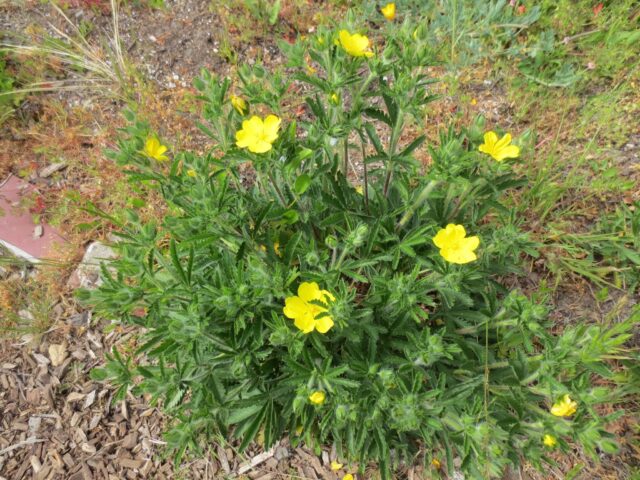
Potentilla gracilis, Slender Cinquefoil, a member of the rose family this butter yellow flow prefers moist soil, but never to be submerged. It will want wet feet, but nothing over the crown. In full sun it can get 3 feet tall.
11. Ranunculus aquatilis L., Water Buttercup
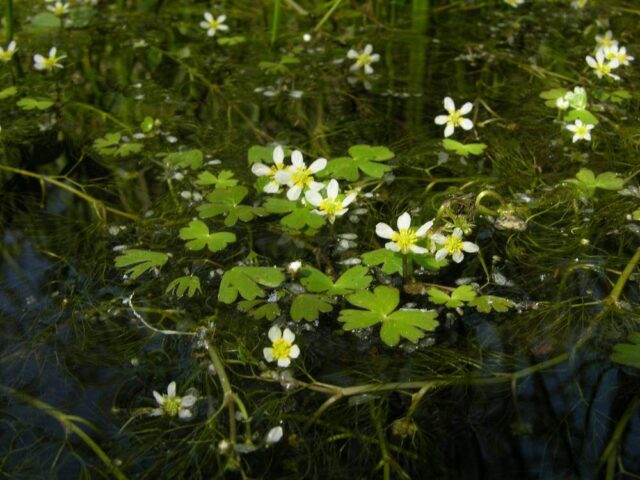
Ranunculus aquatilis L., Water Buttercup, this fully aquatic native bring so much texture to the pond with its floating leaves and flowers, and also its submerged leaves. Flowers will not grow in moving water, and keep the roots no more than 12″ submerged in a pot. Be careful to not let this plant jump or it can become wild quickly.
12. Saxifraga mertensiana, Mertens’ saxifrage
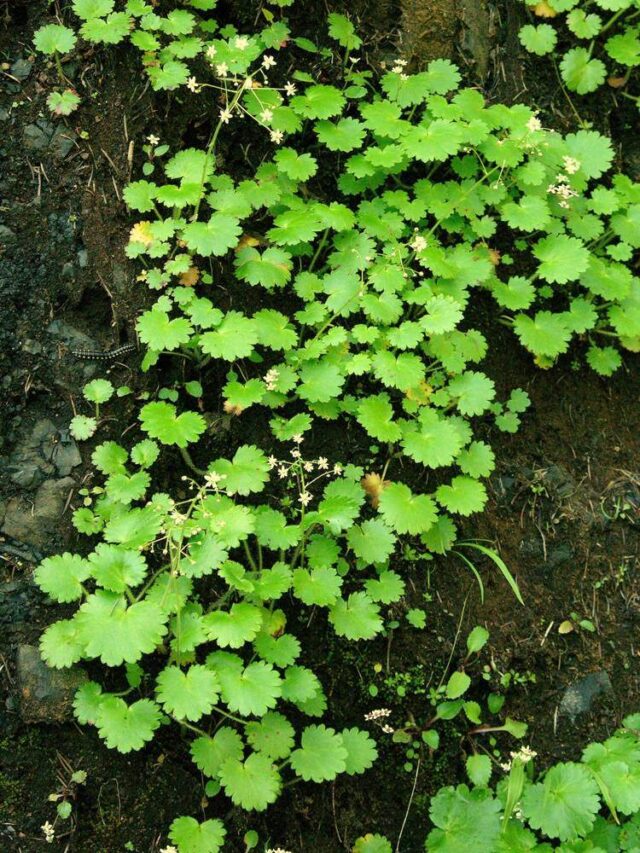
Saxifraga mertensiana, Mertens’ saxifrage, is a personal favorite of mine to find during hikes. It can be commonly found in moist areas next to streams or growing through moss next to waterfalls. It will not like a full sun area and prefer not to be submerged. Its leaf structure gives so much contrast to other plants it is must have for shady ponds and waterfalls.
13. Lupinus rivularis , Riverbank Lupine
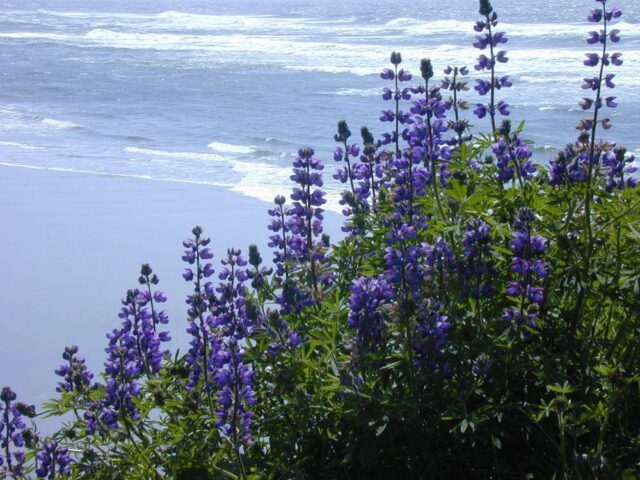
Lupinus rivularis , Riverbank Lupine, is a gorgeous perennial flower that thrives in gravel margins. Wet feet, but never submerged, this flower was cultivated and released along many roadsides until the 1990s. Its howy tall stems produce flowers from white to blue to violet.
14. Caltha palustris, Marsh Marigold
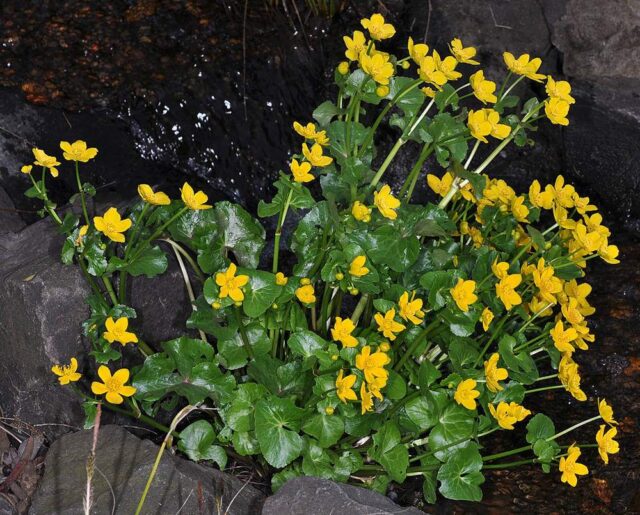
Caltha palustris, Marsh Marigold, is a standard in the pond industry. An early riser in the spring, this plant is a perfect addition to any marginal areas. There are also cultivar varieties with double blooms. Easily found at most pond plant nurseries this is a must have for your native oregon pond plants collection.
15. Ribes bracteosum, Blue Currant
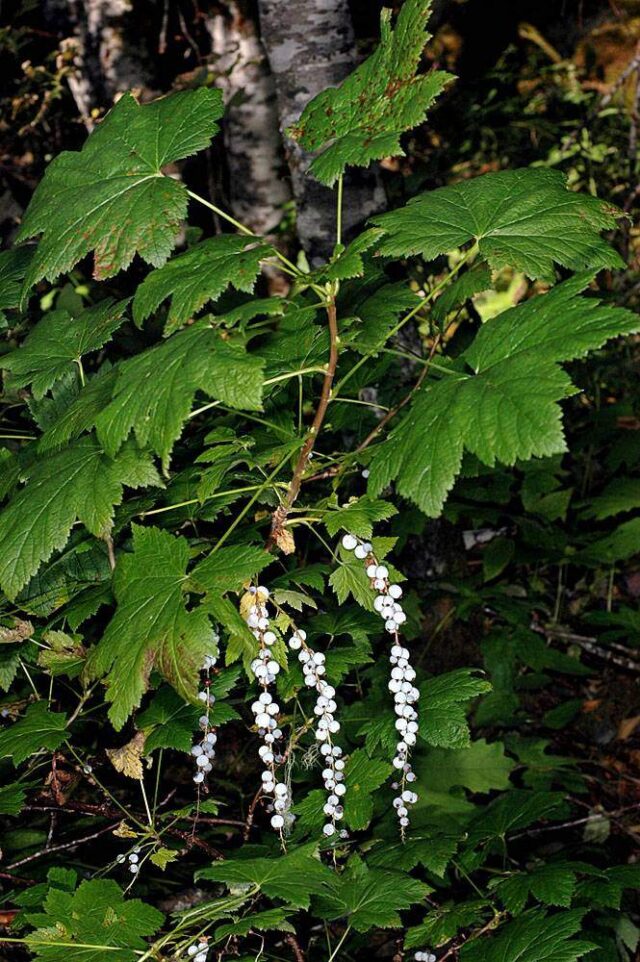
Ribes bracteosum, Blue Currant, is a shrub with an edible berry. Perfect for marginal areas, this perennial also has golden fall color. It has an unmistakeable maple leaf shape and produces long green flowers in the spring. Berries are produced during the summer.
16. Rubus spectabilis, Salmonberry
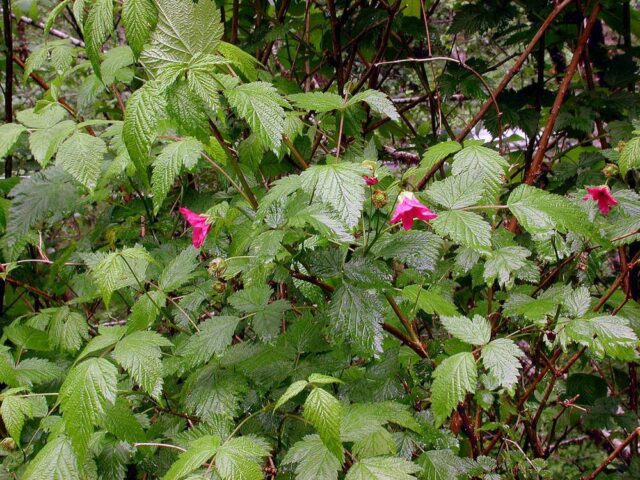
Rubus spectabilis, Salmonberry, is another shrub with edible fruit. This bramble can get quite large inside of a wetland, so pruning and training is recommended. Another great native edible plant this makes an excellent plant to consider for your marginal areas.
17. Erythranthe cardinalis, Cardinal Monkeyflower
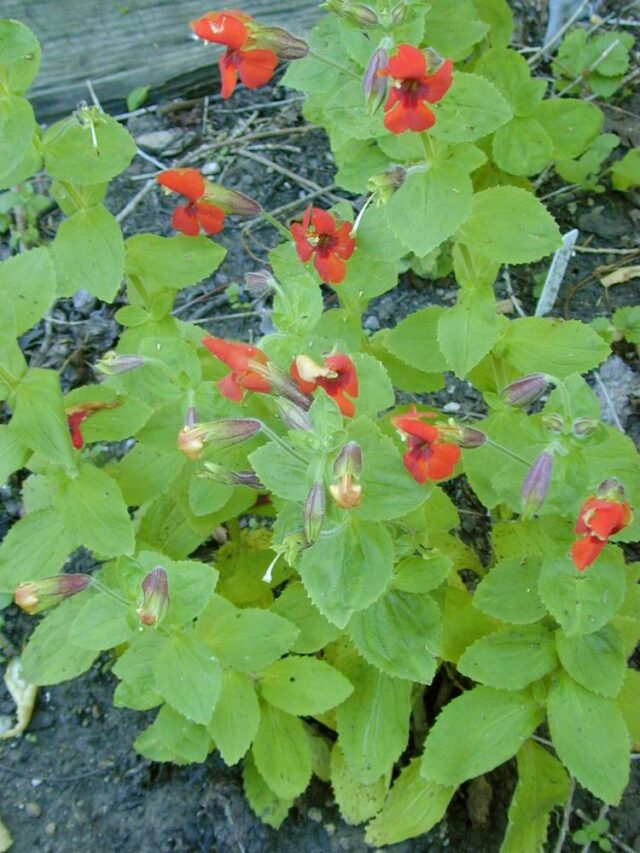
Erythranthe cardinalis, Cardinal Monkeyflower, is a herbaceous perennial with bright red to orange flowers that attract hummingbirds. An excellent marginal plant, this plant can reach up to 3 feet with full sun and is perfect for wetlands.
18. Adiantum aleuticum, Northern Maidenhair Fern
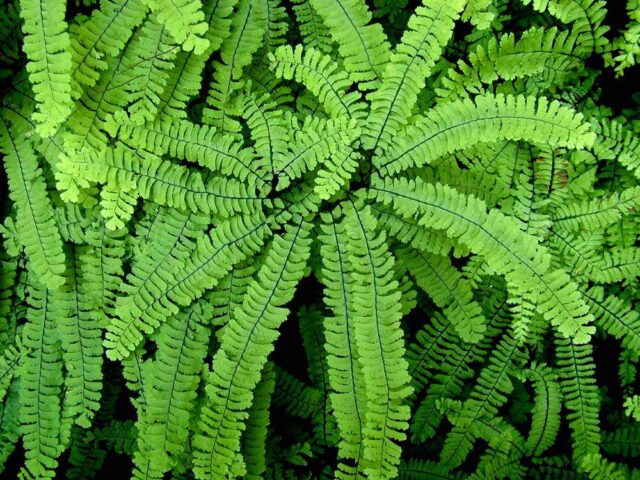
Adiantum aleuticum, Northern Maidenhair Fern, needs almost no introduction. This extremely fickly fern prefers full shade rock crevices around waterfalls. Once it loves a spot, expect beautiful things. An excellent addition to shaded water features this fern has earned my absolute favorite plant of all time award.
If you are looking for assistance in Southern Oregon with your watergarden, contact us
If you are interested in learning more about Native Oregon Pond Plants, or other native oregon flora visit oregonflora.org
